Abstract
In the first study, subjects escaped shock by pressing on a lever under an unsignalled condition. By pressing a different lever they changed the condition to signalled escape for three minute periods. The second study used the changeover procedure to study inescapable-unavoidable shock. Seven rats were used in each study. All subjects in both studies changed over from unsignalled to signalled conditions. Once contact with the signal condition was made, subjects responded to remain in that condition. The three different extinction conditions showed that the correlated stimulus without the signal had greater control over responding than the signal without the correlated stimulus. An analysis based upon shock and shock-free periods was presented.
Full text
PDF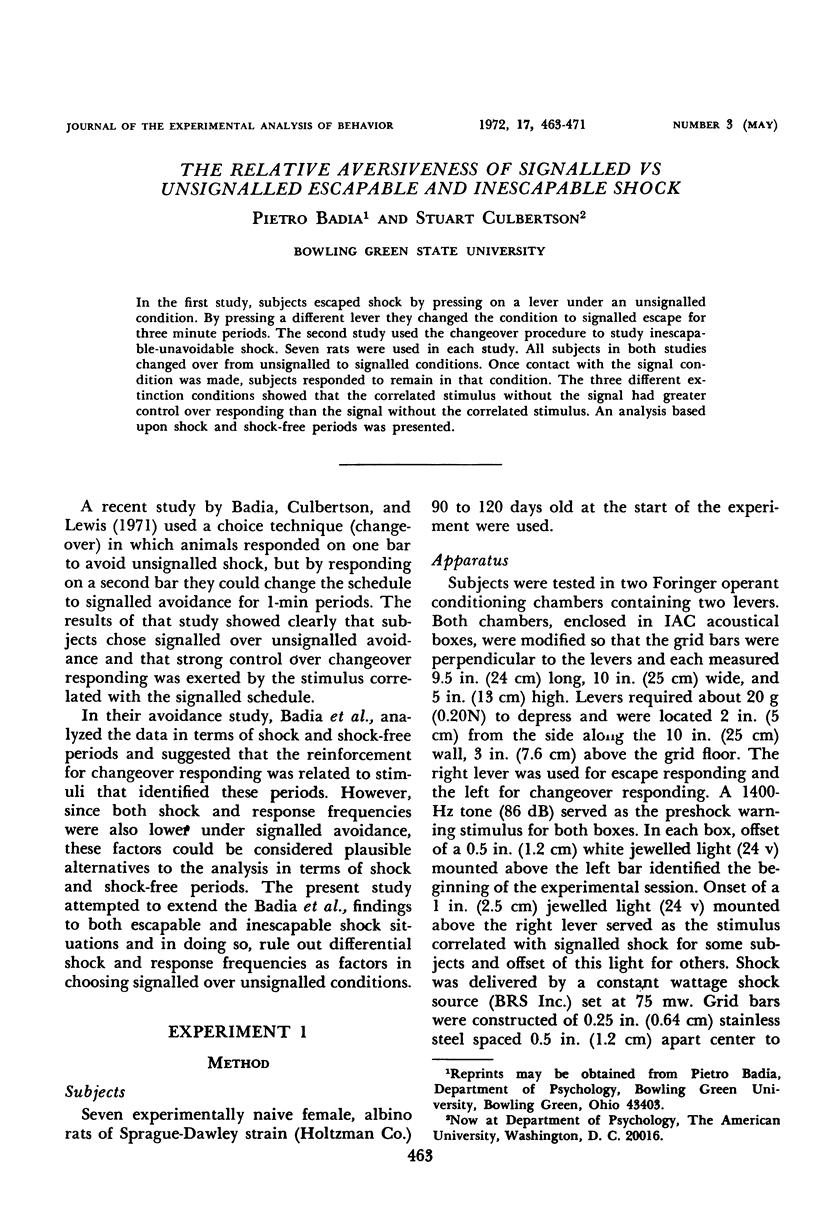
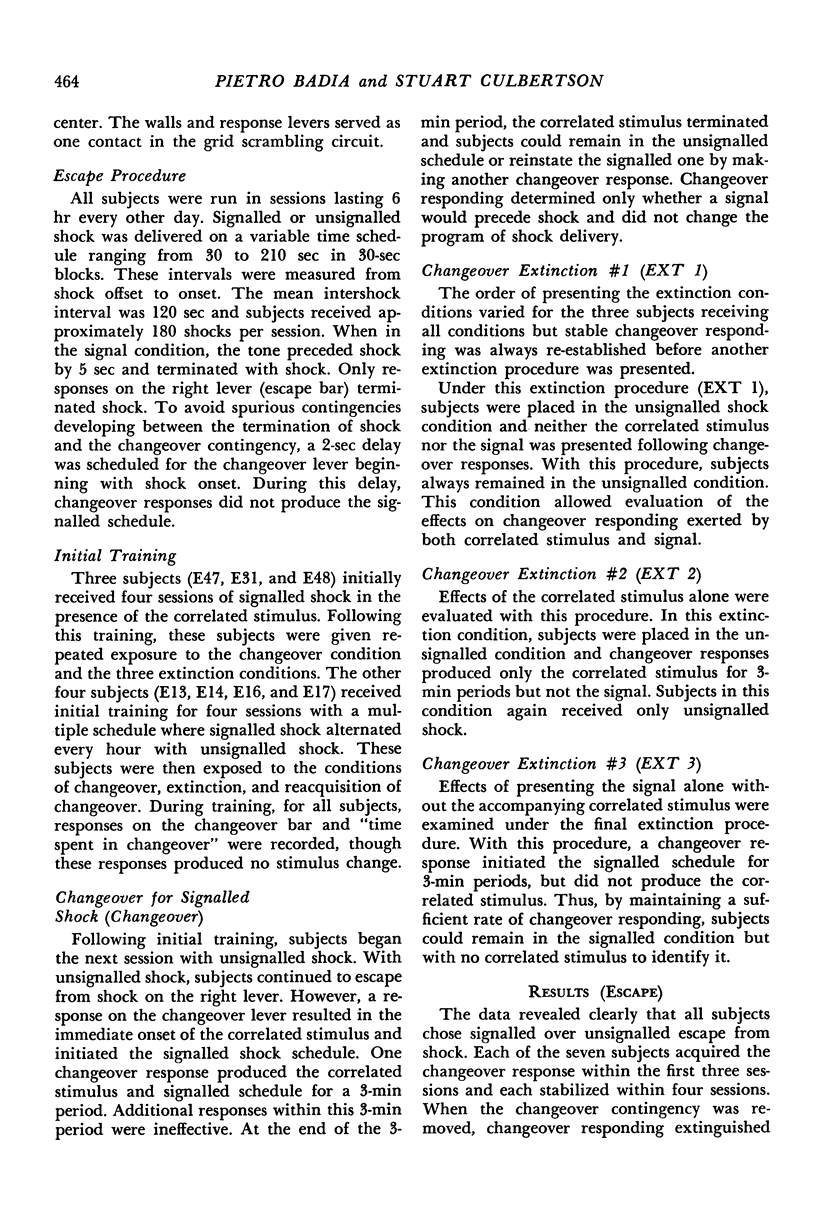
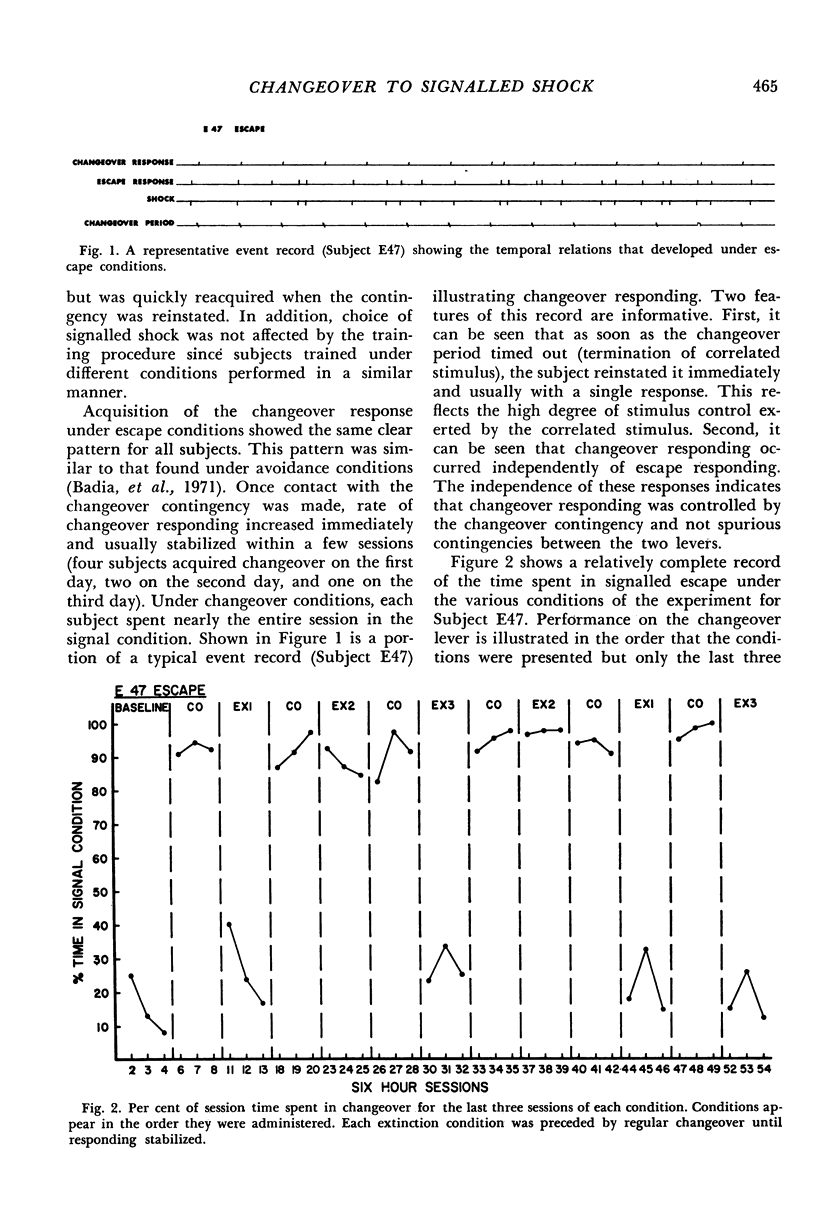
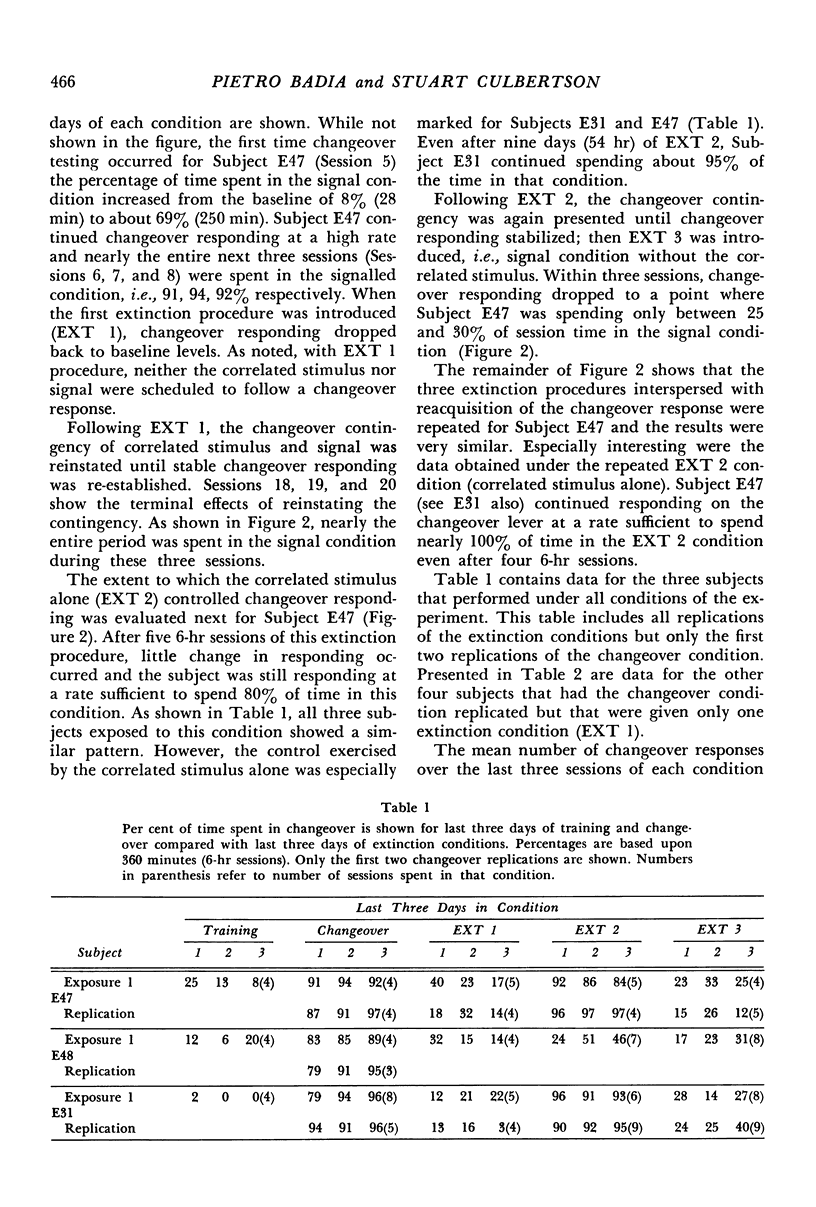
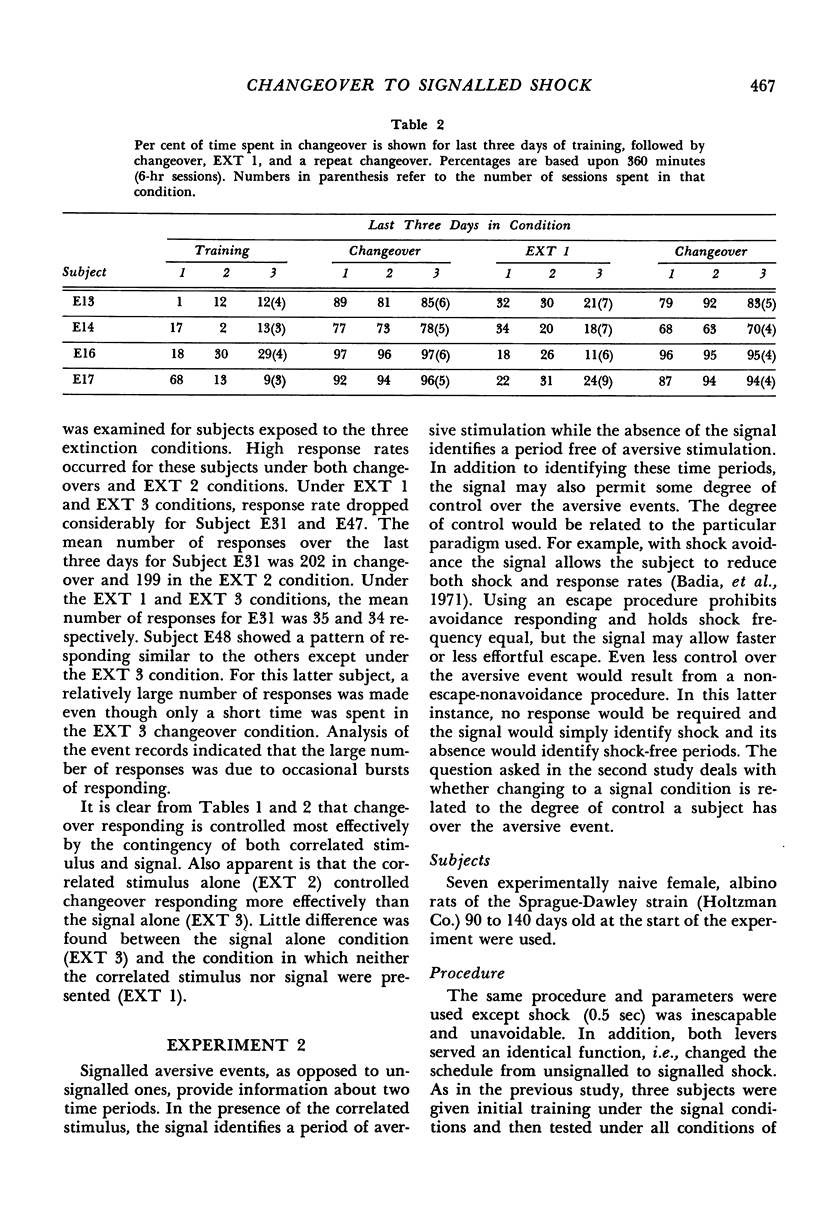
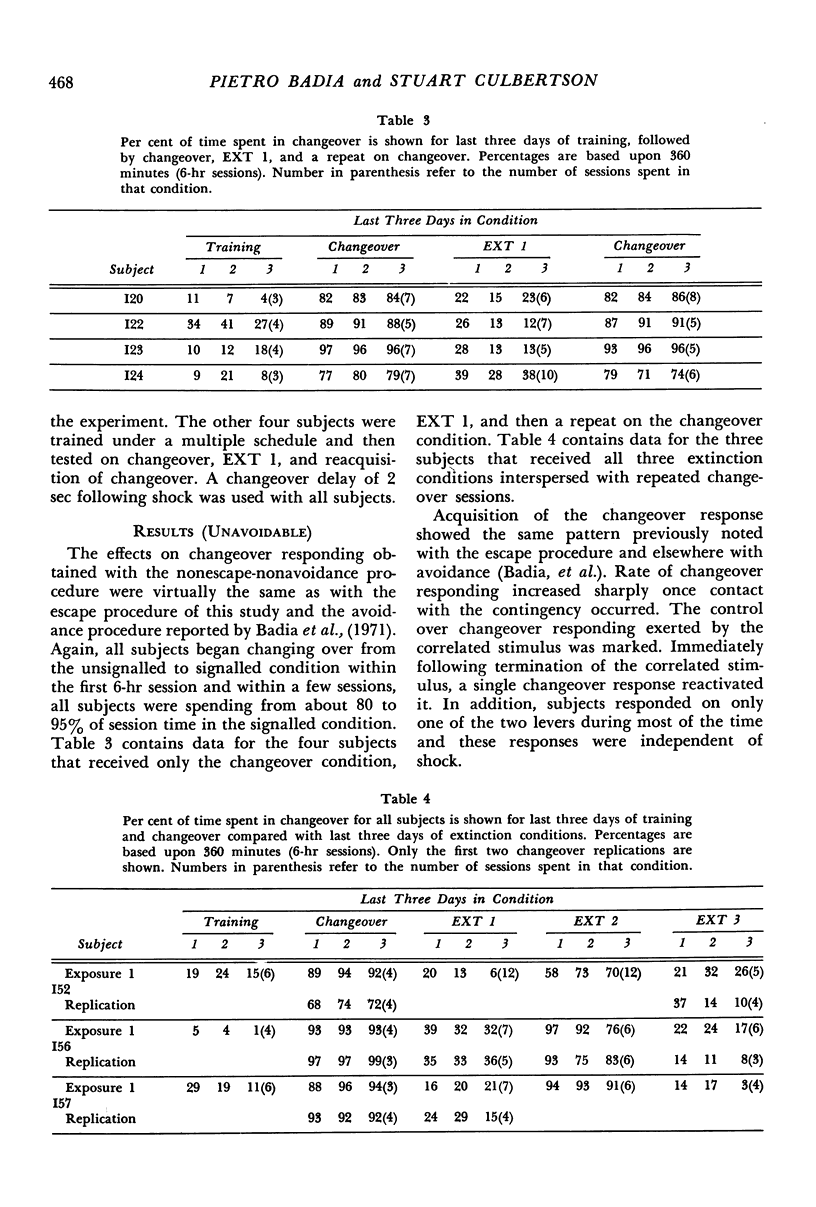
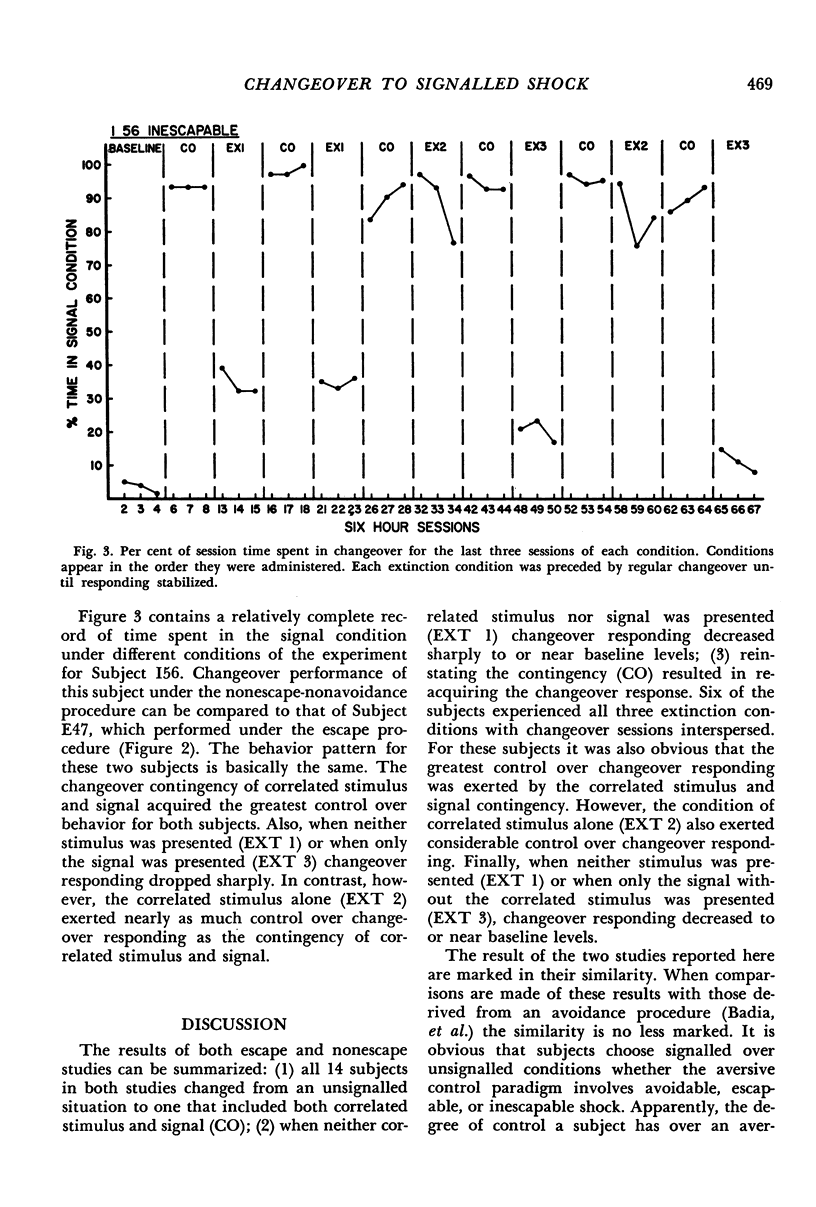
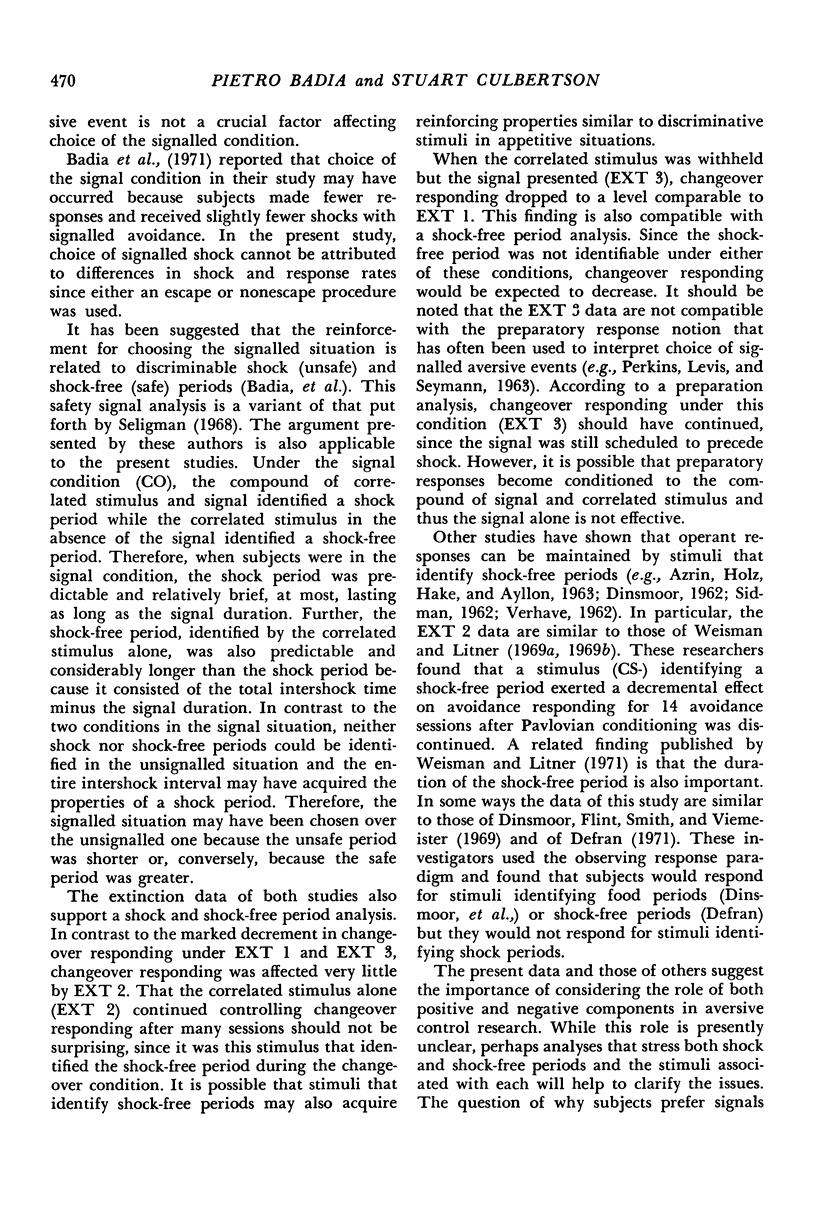
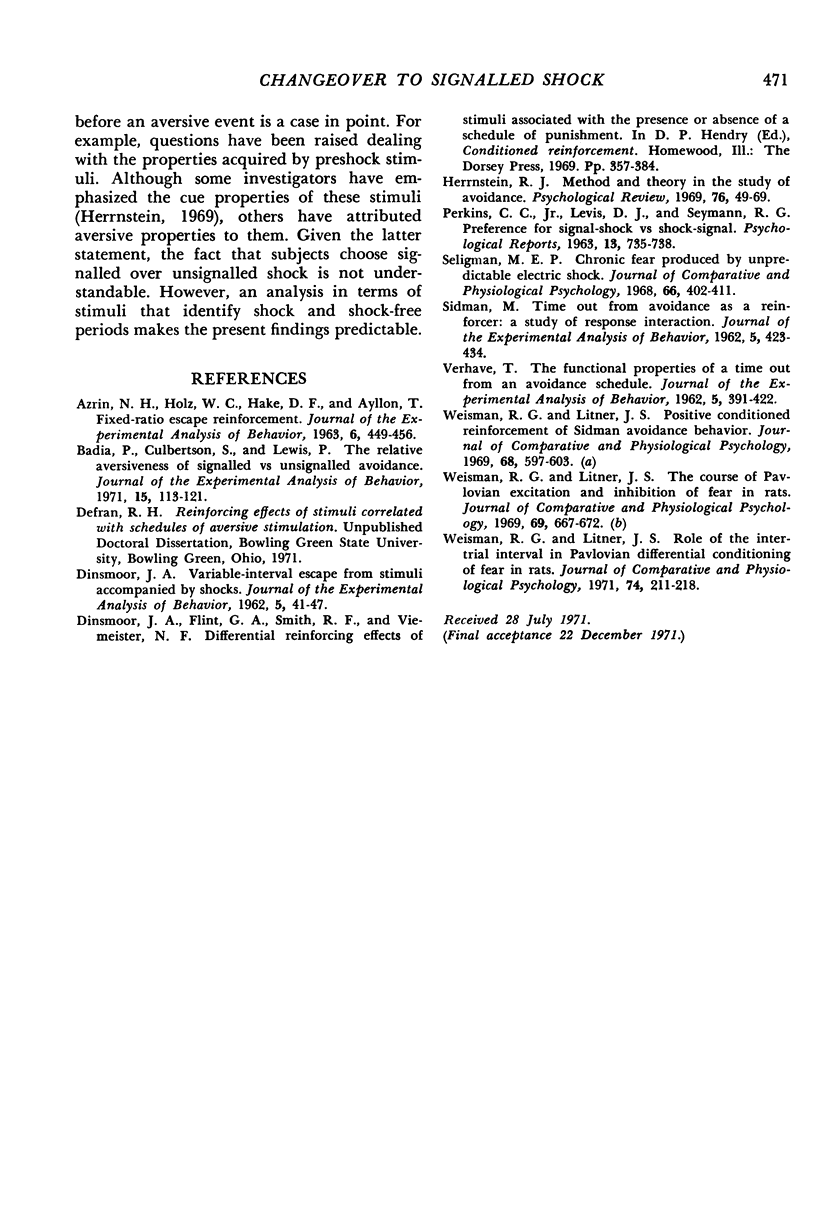
Selected References
These references are in PubMed. This may not be the complete list of references from this article.
- AZRIN N. H., HOLZ W. C., HAKE D. F., AYLLON T. Fixed-ratio escape reinforcement. J Exp Anal Behav. 1963 Jul;6:449–456. doi: 10.1901/jeab.1963.6-449. [DOI] [PMC free article] [PubMed] [Google Scholar]
- Badia P., Culbertson S., Lewis P. The relative aversiveness of signalled vs unsignalled avoidance. J Exp Anal Behav. 1971 Jul;16(1):113–121. doi: 10.1901/jeab.1971.16-113. [DOI] [PMC free article] [PubMed] [Google Scholar]
- DINSMOOR J. A. Variable-interval escape from stimuli accompanied by shocks. J Exp Anal Behav. 1962 Jan;5:41–47. doi: 10.1901/jeab.1962.5-41. [DOI] [PMC free article] [PubMed] [Google Scholar]
- Herrnstein R. J. Method and theory in the study of avoidance. Psychol Rev. 1969 Jan;76(1):49–69. doi: 10.1037/h0026786. [DOI] [PubMed] [Google Scholar]
- SIDMAN M. Time out from avoidance as a reinforcer: a study of response interaction. J Exp Anal Behav. 1962 Oct;5:423–434. doi: 10.1901/jeab.1962.5-423. [DOI] [PMC free article] [PubMed] [Google Scholar]
- Seligman M. E. Chronic fear produced by unpredictable electric shock. J Comp Physiol Psychol. 1968 Oct;66(2):402–411. doi: 10.1037/h0026355. [DOI] [PubMed] [Google Scholar]
- VERHAVE T. The functional properties of a time out from an avoidance schedule. J Exp Anal Behav. 1962 Oct;5:391–422. doi: 10.1901/jeab.1962.5-391. [DOI] [PMC free article] [PubMed] [Google Scholar]
- Weisman R. G., Litner J. S. Role of the intertrial interval in Pavlovian differential conditioning of fear in rats. J Comp Physiol Psychol. 1971 Feb;74(2):211–218. doi: 10.1037/h0030347. [DOI] [PubMed] [Google Scholar]
- Weisman R. G., Litner J. S. The course of Pavlovian excitation and inhibition of fear in rats. J Comp Physiol Psychol. 1969 Dec;69(4):667–672. doi: 10.1037/h0028213. [DOI] [PubMed] [Google Scholar]


